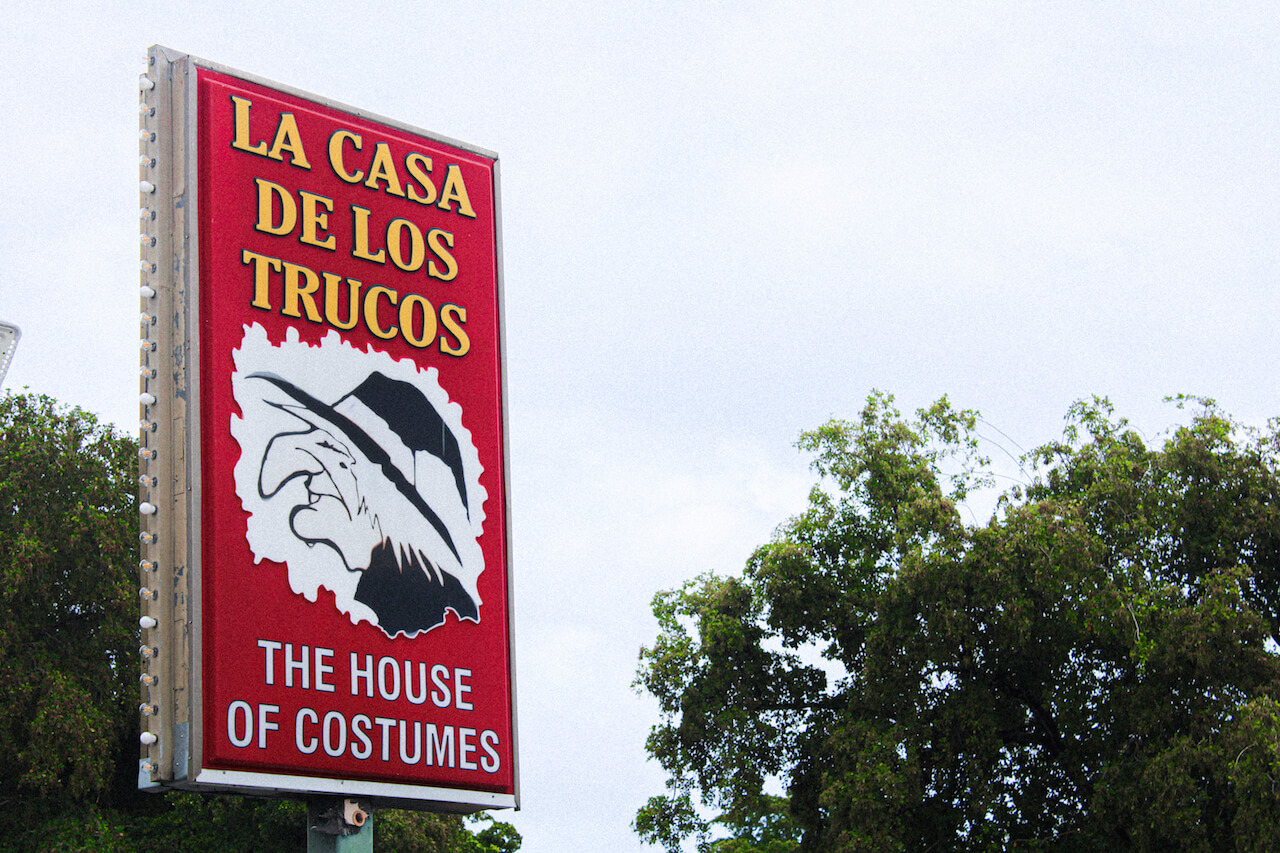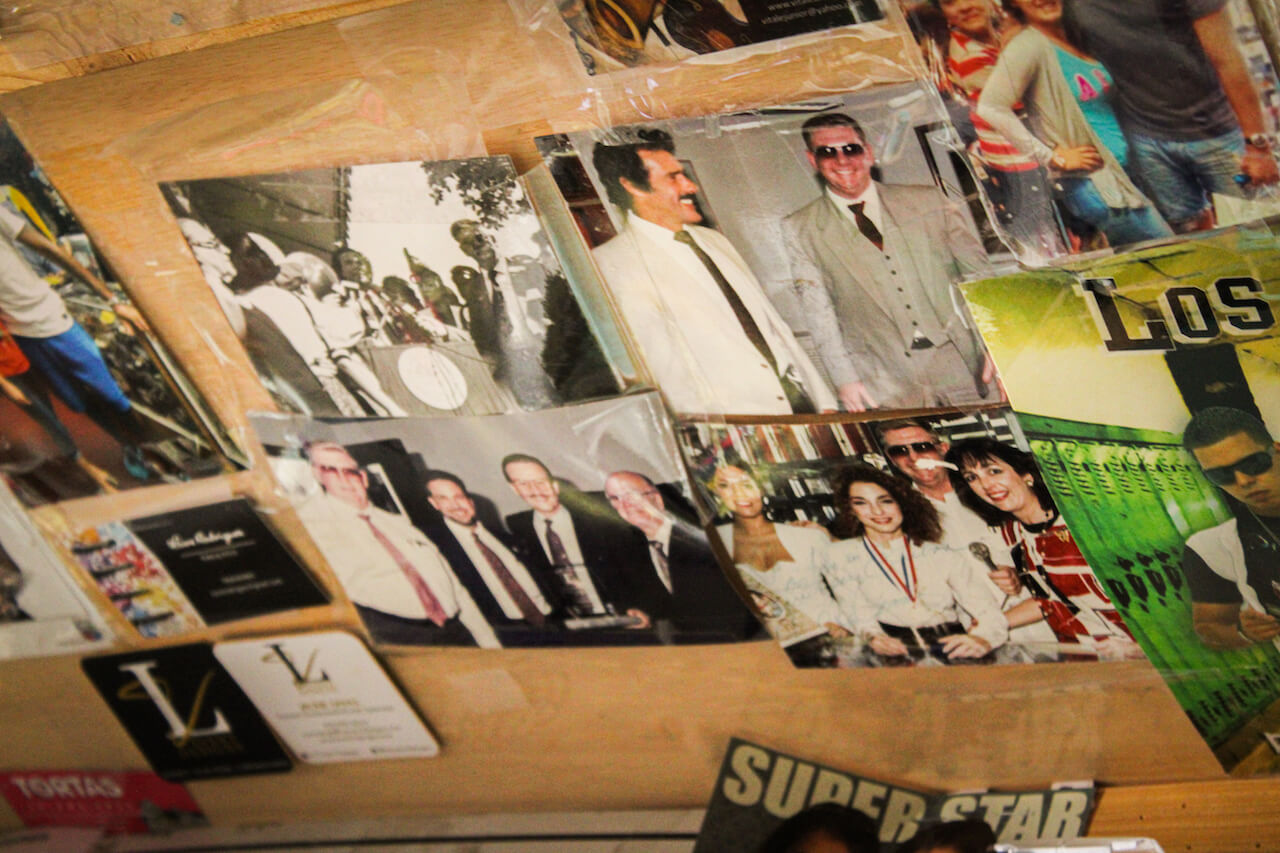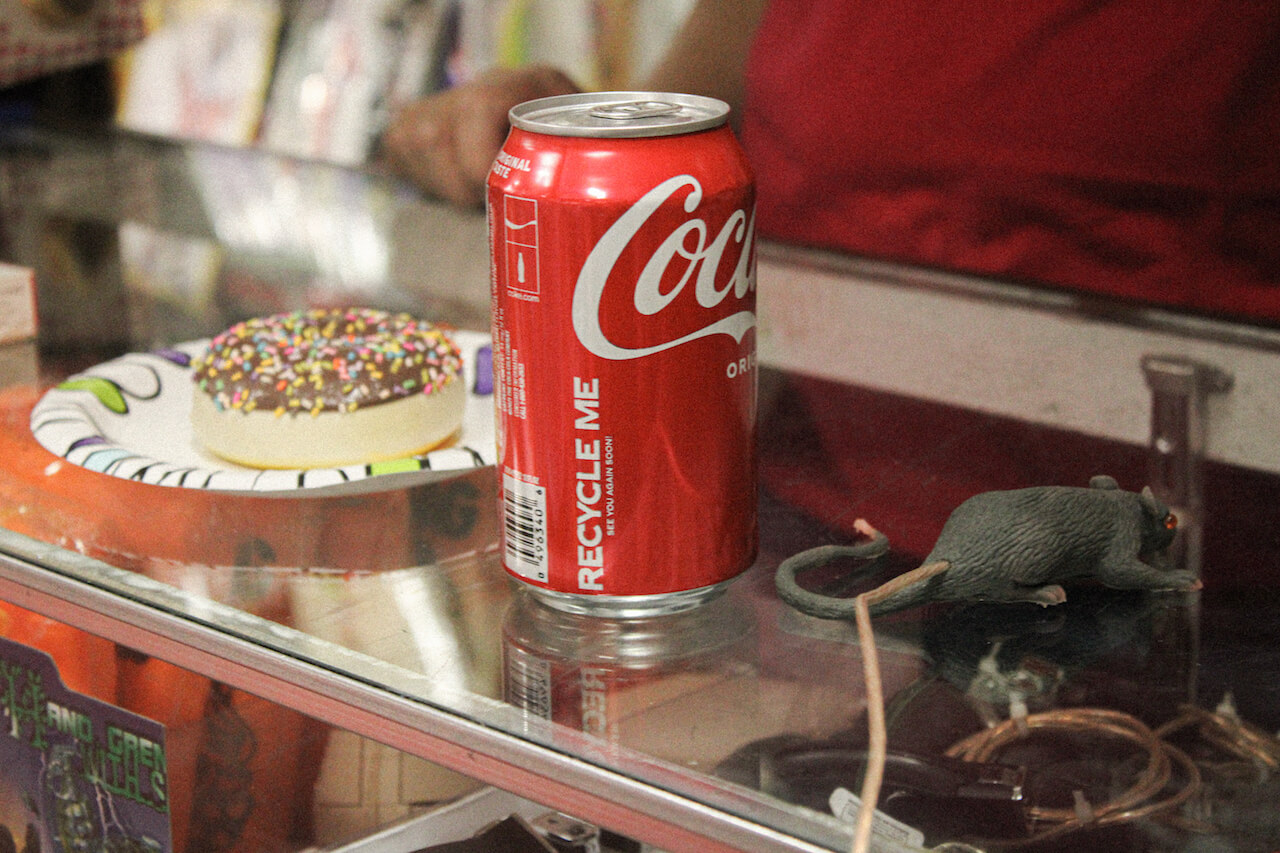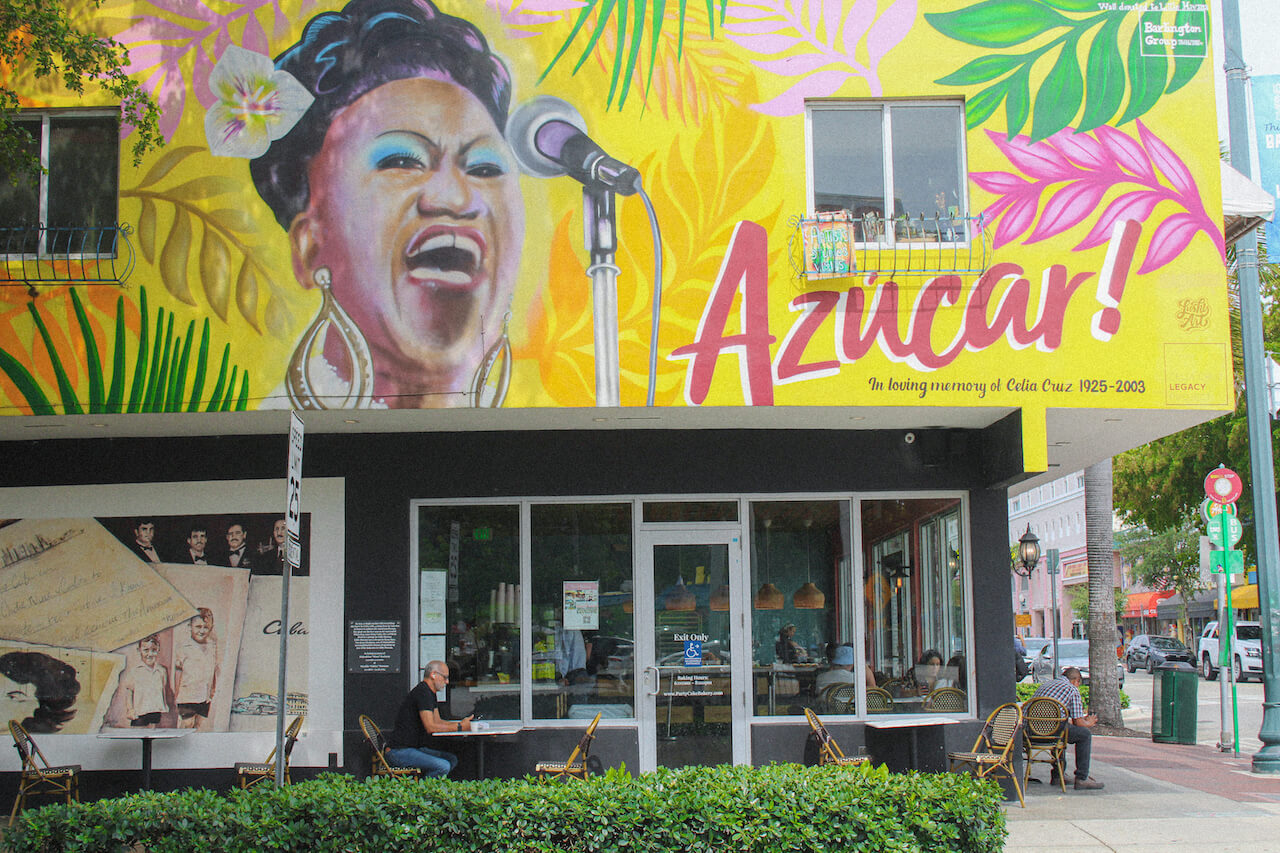Pranks, Pastelitos, and Peter Pan Kids - The History behind Little Havana’s House of Tricks
La Casa de los Trucos is an iconic Miami institution – we took a look at its intergenerational history and discovered the ways it contributed to Little Havana as we know it today.
A short film on La Casa de los Trucos and its family history in Little Havana
Published on June 2, 2023
PART 1: La Casa de los Trucos History
La Casa de los Trucos, literally translated to House of Tricks, appears as an ordinary costume store nestled between 14th and 13th SW Avenue on Eighth Street – except that it is one of the oldest Cuban-owned businesses in Little Havana. Established in 1972 by Esteban Torres, La Casa de los Trucos mirrors the original enterprise in Old Havana, Cuba. The first La Casa de los Trucos existed in Cuba since the 1910s.

According to Jorge Torres, the son of Esteban Torres and current manager of La Casa de los Trucos in today’s Calle Ocho, the first iteration of the store in Miami was a wooden structure that would tremble from the scared jumps of surprise inside.
Jorge’s father, Esteban Torres, was fascinated by La Casa de los Trucos when he was a kid in Habana La Vieja and, according to Jorge, “He liked it, [so he thought] ‘Hey, why not open it up here?’”

Jorge showed us taped photos on the walls that featured well-known Miami celebrities like Andy Garcia and Gloria Estefan visiting the costume store. As he played a video of Gloria Estefan thanking the store for donating a side of their building for a mural of her and her husband Emilio Estefan, his mother, Carmen Cristina Torres, reminisced about the original store in Miami:
“It was a wooden house located further down the street. We used to do all the tricks and jokes (more like pranks) in that same wooden house. Precisely because it was a house made out of wood, the whole structure moved if people inside jumped, which happened a lot when we did the prank of the ‘snakes in a jar.’ I had to shout: ‘Don’t move!’ ‘Don’t move!’ It was scary. Later on, thank God and with time, we were able to collect enough money to buy off the land.”
Era una casita de madera allá adelante. Entonces nosotros en esa casita de madera hacíamos todas las bromas y todas las cosas. Pero, como era de madera, sí habrías una de esas latas de las de dónde saltan cosas la gente, cuando lo veía venir, brincaba. Y la casita se movía. Y yo tenía que gritar: “¡No se muevan!” “¡No se muevan!” El miedo. Pero por lo demás, gracias a Dios y con el tiempo recolectamos dinero y compramos la tierra.

Sometime later, the wooden house from the original Miami La Casa de los Trucos was replaced by the current building on Eighth Street.
According to Carmen Cristina Torres, Esteban also had family associated with the Casa de los Trucos in Old Havana:
He had family who were from La Casa de los Trucos in Old Havana.
Therefore, he said, “Let’s put it up [here].”
Porque él tenía la familia de él que era de La Casa de los Trucos de La Habana Vieja.
Entonces dijo: “Vamos a ponerla.”
It wasn’t a simple feat to open up the house of tricks. He was one of millions of Cubans who fled Cuba’s communism – and in his own story, he was threatened with his life by shots from Cuban authorities as he escaped on boat. He did not know English when he came to the country and worked several jobs to create a living in the United States. Jorge recalled that his father lived in a car in order to make it to his different shifts and jobs – when Esteban founded La Casa de los Trucos, he would return from a night shift as an x-ray technician to work the store during the day.
La Casa de los Trucos has been a landmark in Miami for so long that it’s considered a million years by Miami’s length of history (the city was founded in 1896). For nearly half the time Miami has been an officially named city, La Casa de los Trucos in South Florida has existed. On episode 169 of Pero Let Me Tell You! Cuban-American podcasters Ismael Llano and Darien Borges joke about the longevity and cultural prowess of La Casa de los Trucos in the fabric of Miami’s community:
“Right now there is only one, but at one point there were three… The Casa de los Trucos is exactly what it says it is… It’s a store during Halloween [where] they’ll sell costumes, they’ll sell magic tricks and pranks… Whoopee cushions… and it’s a very much Miami institution. It’s been open for like a thousand years.” Ismael laughs. “I think it was open before Miami became incorporated. I hope the one on Eighth street is open for a hundred more years.”
– Pero Let Me Tell You, Ep 169. “Pero…Cocaine Cowboys y La Casa de los Trucos,” 1:03:55, Aug 13, 2021


It’s no surprise that La Casa de los Trucos has been in the community for so long. It was, after all, founded by a man who made laughter a choice of career. Two of the other oldest Cuban-founded businesses in Calle Ocho, Optica Lopez and Los Pinarenos, have fond memories of the entrepreneur. Through their recollections, we understand not only the history and importance of La Casa de los Trucos, but also of a Latino solidarity that defines Little Havana’s identity. In recent years, new waves of immigrants from predominantly Central American countries such as El Salvadore and Nicaragua have made appearances in neighborhoods like Little Havana.
PART 2: The Community of Founding Cuban Businesses on Calle Ocho
Little Havana has historically been a neighborhood filled with cultural diversity. However, the Latin and Caribbean soul that currently defines this community didn’t arrive until the sixties. Guillermina Hernández explained that “about a 100 years before,” this predominantly Cuban neighborhood was occupied by Jamaican immigrants and those of different cultural backgrounds.
Before businesses like El Dorado Furniture Store, Los Pinarenos, or La Casa de Los Trucos cropped up in Little Havana during the 60s and 70s, this locality was a Jewish and Irish neighborhood. As Cuban refugees arrived to America in the first migrations waves, they formed new communities that embodied memories of homes they left behind. Those communities are still present till this day in places like La Pequeña Habana, which started up as a bunch of small migrant businesses neighboring each other.
The feeling of unity in Little Havana is found in daily conversations, interactions and in the stories of all the people that founded this destination as it’s known today. People like Esteban Torres, the owner of La Casa de los Trucos, contributed to this sense of belonging endemic to the neighborhood. When we asked owners and workers of these historic businesses on Calle Ocho, they all shared memories of Esteban Torres. He was not just a neighbor, but a part of their day in one way or another.

Jorge Herrera, an Óptica López employee since the 70s, shared with us that he used to run into Esteban at a little coffee shop that no longer exists.
“This establishment was called La Casa Sierra, it was next to a butcher shop. Since Esteban went there to eat lunch we would bump into each other quite often. I remember that he liked to make a lot of jokes.”

According to Guillermina Hernández, owner of Los Pinarenos, she had met Esteban even before he had opened La Casa de los Trucos and became good friends with him. Apparently, “he used to be a client in the restaurant her family had.” Hernández witnessed the growth of Esteban’s costume store from a shaky wooden house to a well-known landmark in the greater Miami community.


By nature of its family-owned history, La Casa de los Trucos reminds many of memories with family members and a feeling of comfort and familiarity.
Laura, mother of two from Nicaragua, expressed the warmth and community she felt going to La Casa de los Trucos with her family, “Yo me siento como en casa en la Casa de los Trucos porque nos reciben personas de diferentes nacionalidades con mucho cariño.”
“I feel at home in La Casa de los Trucos because they welcome me and people from different parts of the world in a loving way.”
Cuban-American Elizabeth López, 23 of Miami, Florida, remembers visiting La Casa de los Trucos with her family, “Casa de los Trucos was that place that your parents would take you when you were little. If you didn’t have a costume ready yet, or they didn’t have your specific costume, or maybe it was slightly cheaper.”
PART 3: La Casa de los Trucos and the Future of Calle Ocho
Even though Little Havana is considered to be an authentic place that preserves the Latin and Cuban essence of community, this doesn’t come without its challenges. There have been certain developments looming over the neighborhood as Little Havana rises in notoriety. Guillermina Hernández shared with us her concerns on the loss of unity in the community and she attributes this issue partly to the tourists that visit Little Havana.


According to her, they should consider supporting small businesses as they flood the neighborhood with photos and tour groups. She shared with us that she hopes that younger generations fight in defense of keeping the Latin roots alive. “I don’t know if you are Cuban or Hispanic, at the end of the day we are all Latin and we need to prevent the wipe out of our community.”
Jorge Torres, who works in keeping alive the family business and cultural icon that has become La Casa de los Trucos shares Guillermina’s perspective on how Little Havana has slowly transformed into a tourist attraction. On the other hand, Jorge doesn’t seem to think of gentrification as a primary problem in Little Havana. He believes this social phenomena is not as present in La Pequeña Habana as in other communities like Little Haiti.


Part 4: The Future of Little Havana and Tides of Time
The tight ties of the greater Latin community have allowed businesses like La Casa de los Trucos to become such an important cultural icon and reference. Jorge Torres credits the generational reputation of the business to the ways it has been introduced to so many Miami families over the past few decades. Carmen Torres emphasized the importance of family unity: “Family unity is the most important thing. It seems that nowadays that unity no longer exists. People seem to prefer a gun over a dance. What else can I say?” It’s the job of new generations to take care of the legacy of places and the stories of immigrants like Esteban Torres and his family. Even as the neighborhood of Little Havana and the city of Miami may change with the tides of time, there will always be the sounds of laughter on the streets and stories people carry in their pockets.